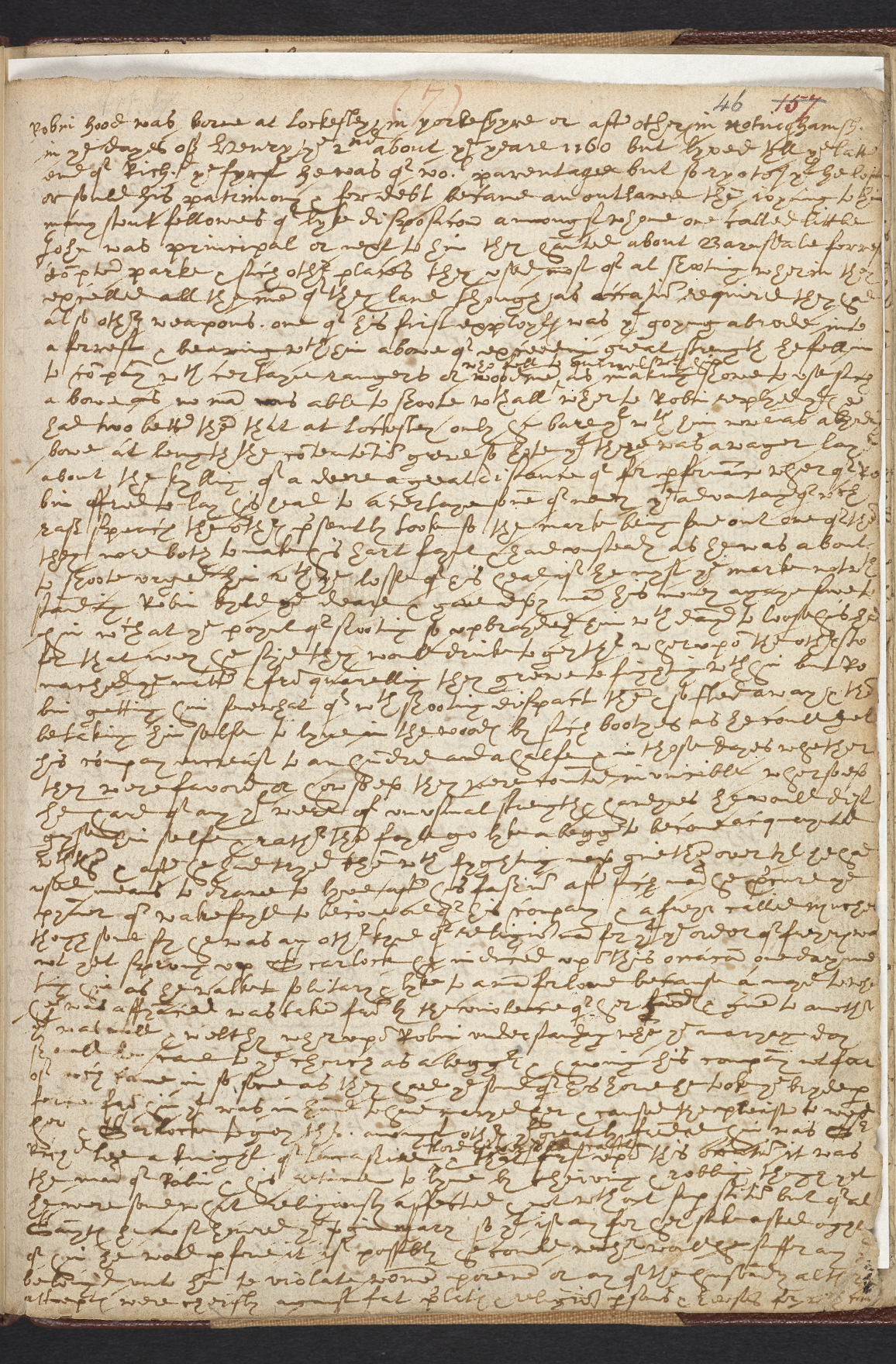The Sloane Manuscript ‘Life’ of Robin Hood
The British Library contains many items that were collected by Hans Sloane which were formerly in the British Museum; among them is the earliest known prose ‘life’ of Robin Hood (Sloane MS 780 ff. 46-48 b Robin Hood Memoir of: 17th cent.) It appears in a manuscript along with others, which make up of a variety of items composed or transcribed at different times, these include:
- 1-8 b Thomas Simson: Moral poem: 17th cent.
- 9-45 b Thomas Simson: Poem intitled, ‘Its synne and shame, detested and digested into 15 fits’. 17th cent.
- 48 b Thomas Simson: Moral precepts, in verse: 17th cent.
- 49-55 Astrolabe: De astrolabii partibus et usu: 15th cent.
- 53 b Geography: Nomina aliquarum civitatum, cum longitudine et latitudine: 15th cent.
- 54 b Kalendars: Tabulae Ecclesiae festorum: 15th cent.
- 55 b-58 b Hippocrates: De judiciis e lunae observatione formandis de sanitate, vita et morte infirmorum: 15th cent.
The Sloane Manuscript ‘Life’ consists of five and a half pages of the volume; it is difficult to read, but it was printed somewhat inaccurately by two Victorian editors: William J. Thoms (A Collection of Early Prose Romances), and John Mathew Gutch (A Lytell Geste of Robin Hode). The ‘Life’ gives us the first identification of Robin Hood’s birth-place as the mysterious ‘Lockesley’, which could derive from a now lost ballad. The ‘Life’ was brought to the attention of the public by Joseph Ritson, who used it in the course of his famous introduction ‘The Life of Robin Hood,’ in the first edition of Robin Hood: A Collection of all the Ancient Poems, Songs and Ballads, now extant, relative to that celebrated English Outlaw (2 vols., London) published in 1795. It is widely accepted that the ‘Life’ was composed towards the end of the sixteenth century, possibly before the contributions made to the Robin Hood legend by Anthony Munday. The text could be a copy of an original that was read aloud to a scribe; proper names such as Plumpton appear to be written as Clopton or Clomptoun. Also certain phrases, first left out, were later written in above the line.
For the most part, the ‘Life’ is a clumsy prose version of The Gest of Robyn Hode, although it is clear that the anonymous author also knew of early versions of Robin Hood’s Progress to Nottingham, The Jolly Pinder of Wakefield, Robin Hood and the Curtal Friar (here he is called Muchel, confused with Much the Miller’s Son), and Robin Hood and Allen a Dale (here the story is used for Scarlock). The reference to John Major (History of Greater Britain, 1521) shows that he was an influence on the author of the ‘life’, who like Major, makes Robin a contemporary of Richard I. It is frustrating to realize that the unnamed castle of Sir Richard at the Lee that is mentioned in the Gest, is named in the ‘Life’, but incomplete (..rso.. castle), which leaves us wondering. In the words of J. C. Holt (Robin Hood) ‘its only fresh contribution is to provide Robin with a birthplace – Locksley’. See also, Rymes of Robyn Hood, R. B. Dobson and J. Taylor, 1976, p. 286-7, and The Many Robin Hoods 5.
(Posted 7/10/21)
© British Library Board, Sloane MS 780 ff. 46-48 b





